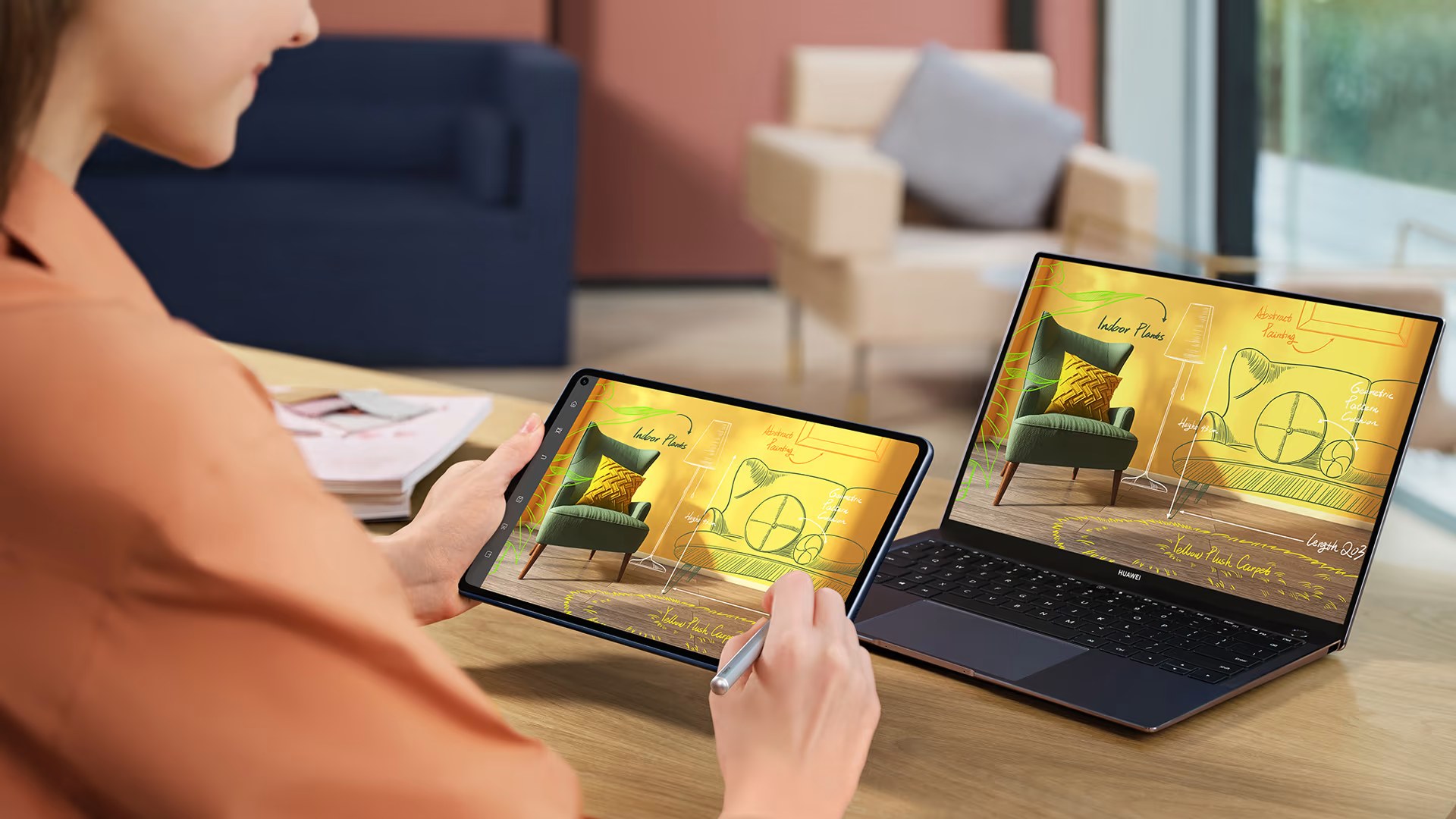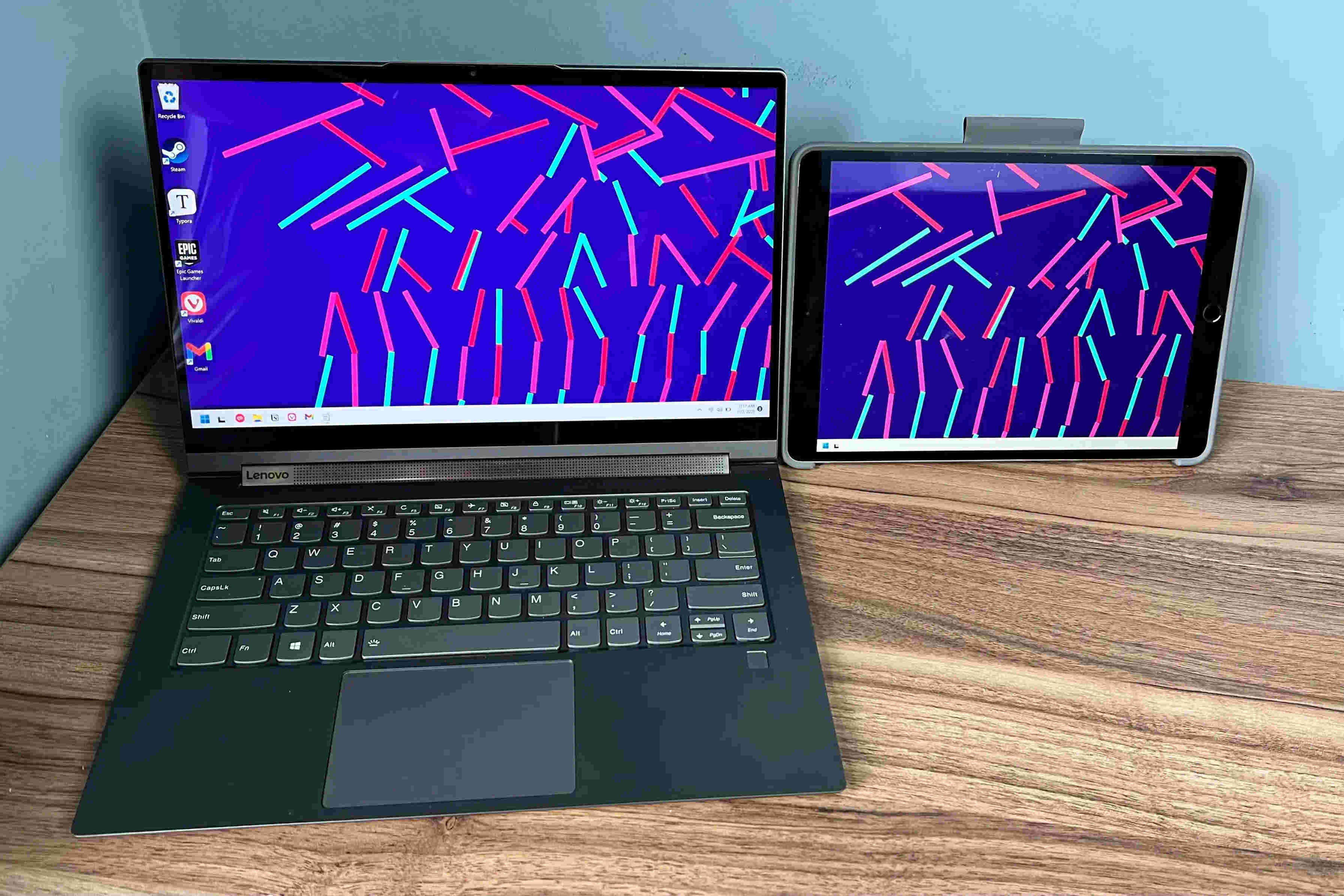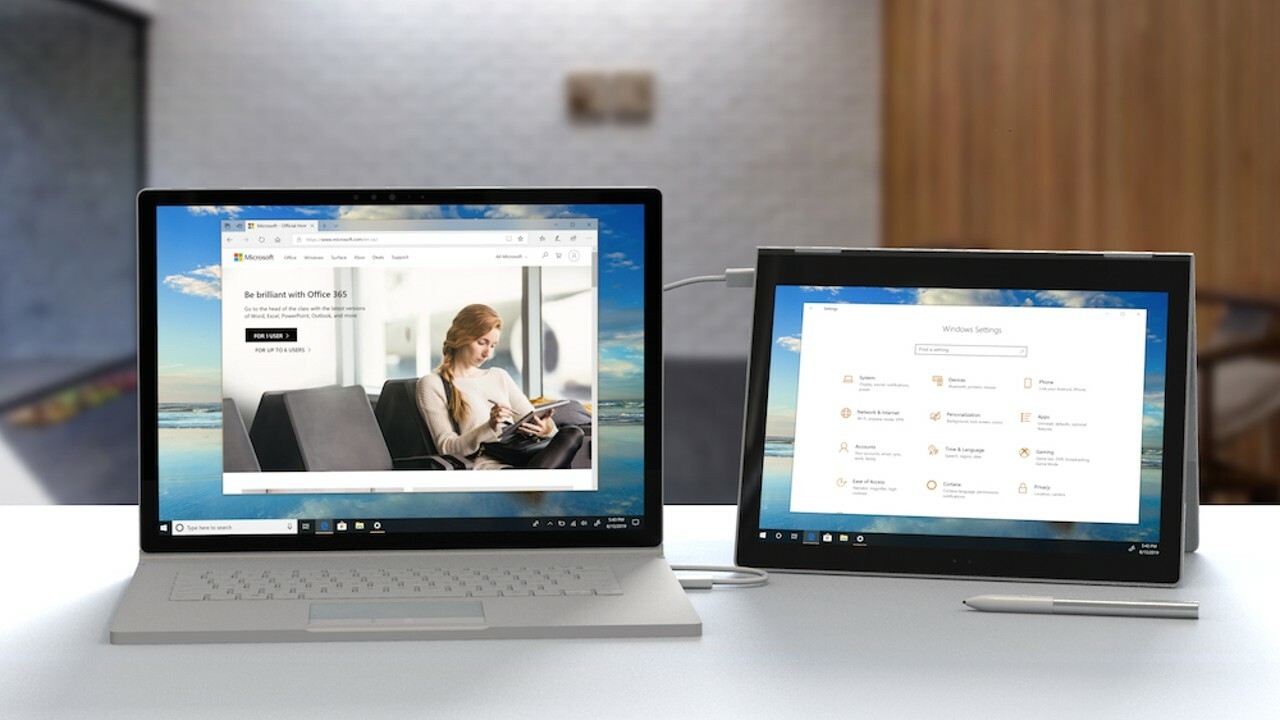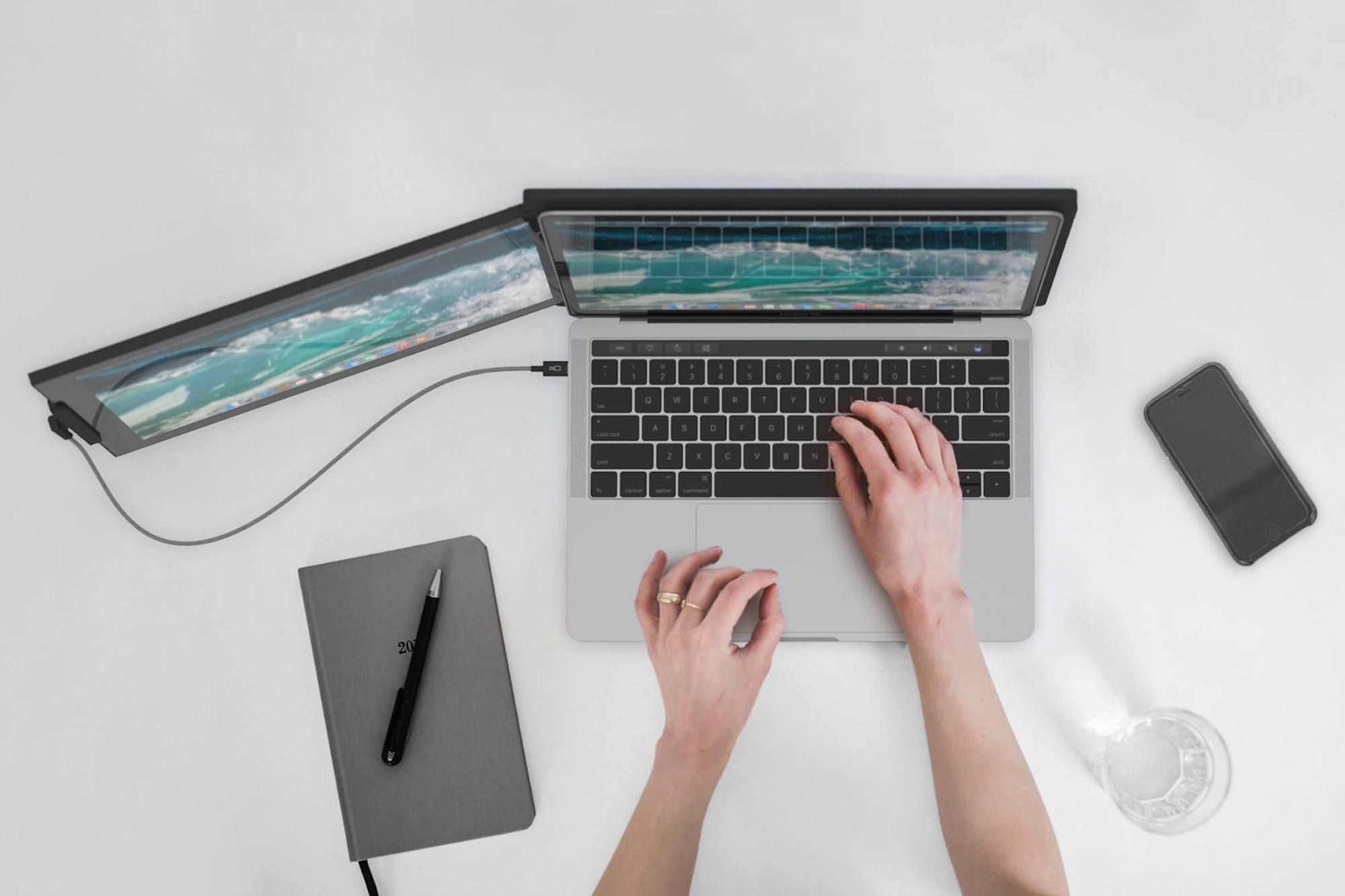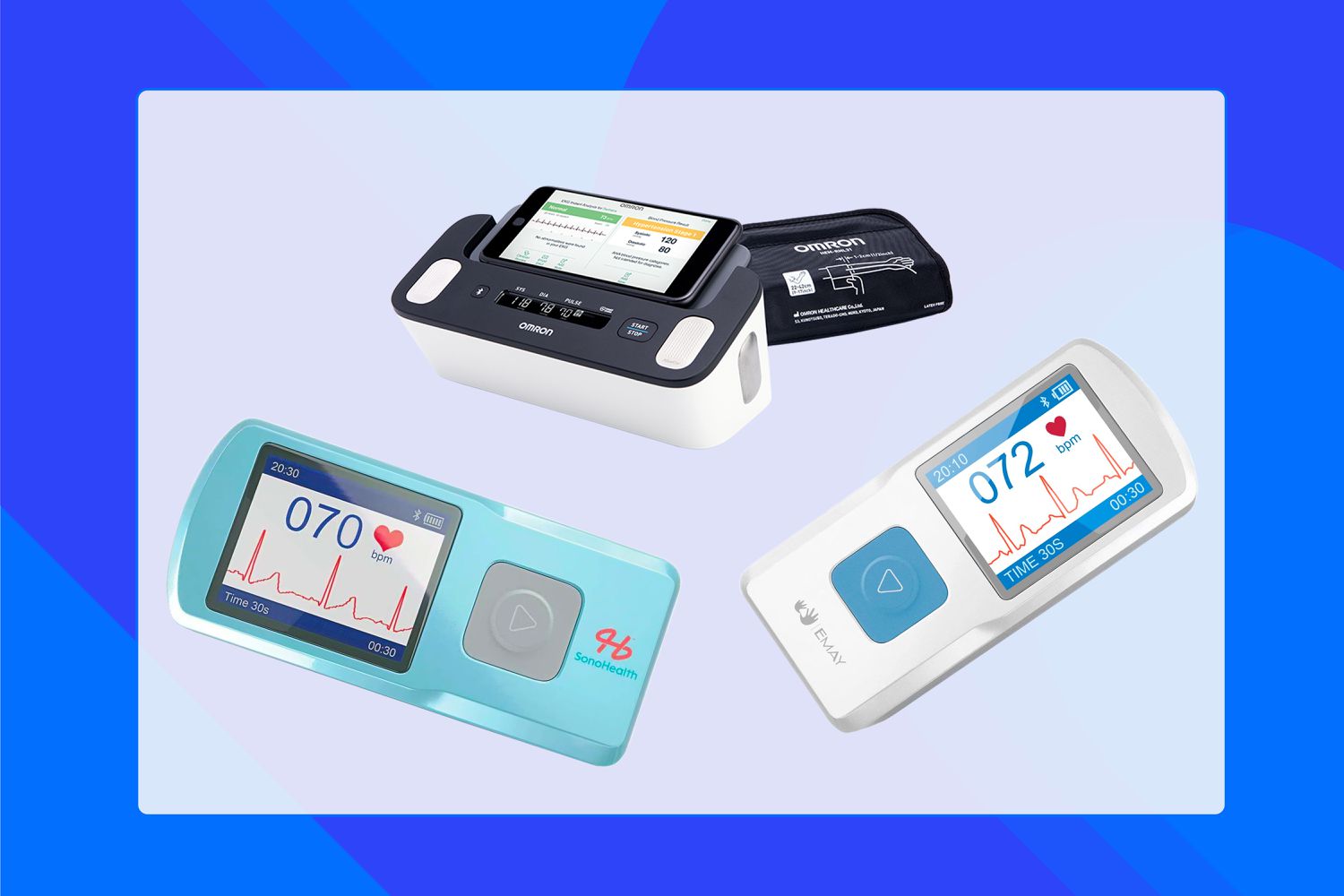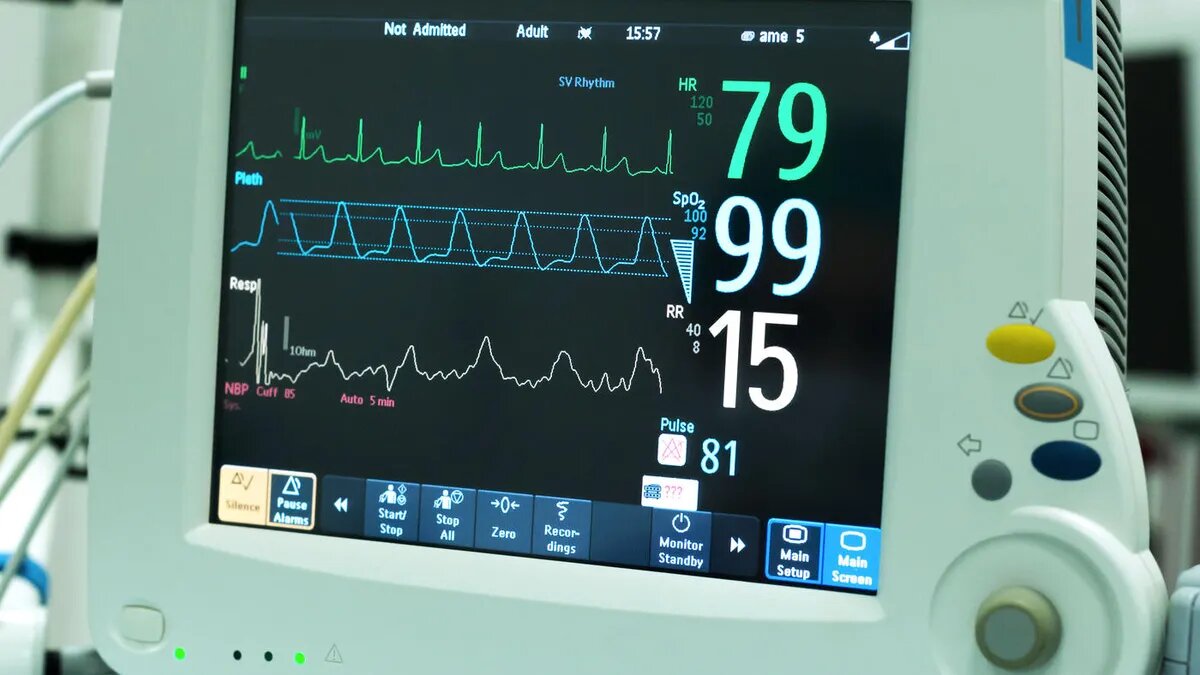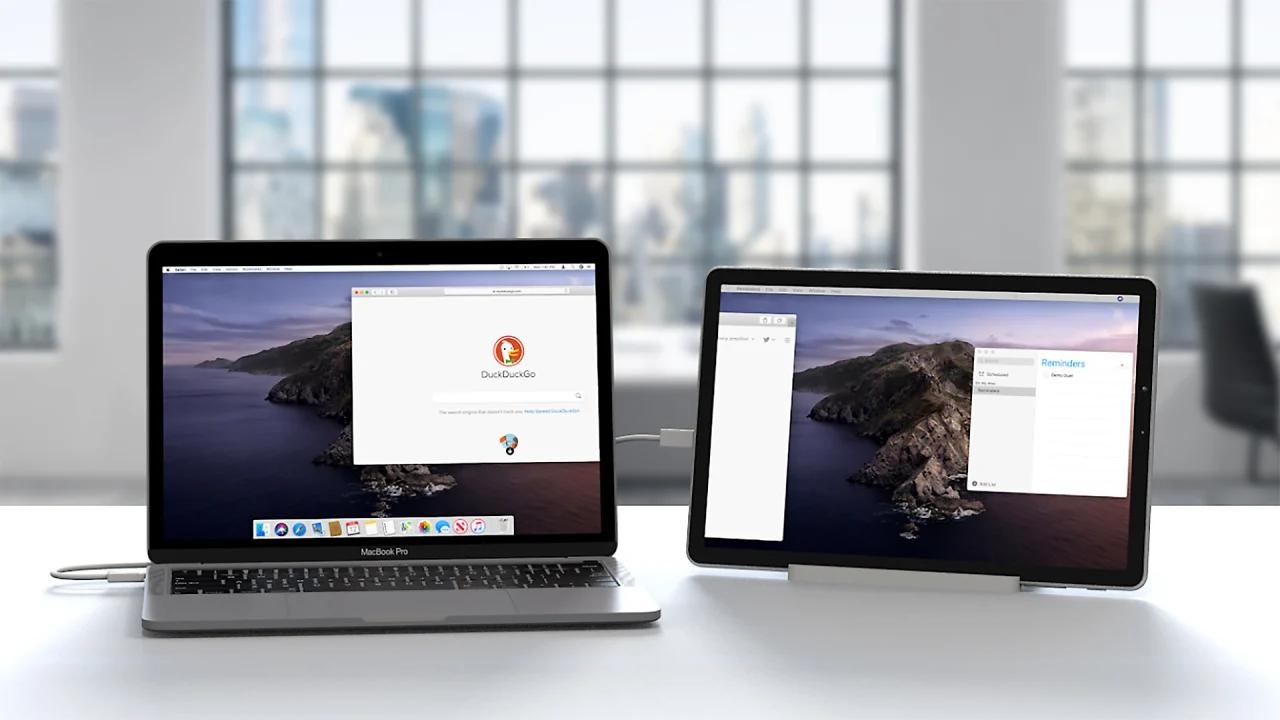Introduction
As technology continues to evolve, we find ourselves relying more and more on multiple devices to enhance our productivity. One way to maximize efficiency is by utilizing a tablet as a second monitor for your computer. This allows you to expand your screen real estate, increase multitasking capabilities, and enhance your overall workflow.
Connecting a tablet as a second monitor may seem like a daunting task, but with the right tools and instructions, it can be a seamless and rewarding experience. In this article, we will guide you through the step-by-step process of connecting your tablet as a second monitor, enabling you to take full advantage of its portability and functionality.
Before we dive into the technicalities, it’s essential to ensure that your tablet is compatible with your computer and meets the necessary requirements. Furthermore, understanding the benefits of using a tablet as a second monitor can help you appreciate the value it brings to your work and personal life.
So, are you ready to harness the power of your tablet as a second monitor? Let’s get started!
Step 1: Check Compatibility and Requirements
Before you embark on the journey of connecting your tablet as a second monitor, it’s crucial to verify the compatibility between your tablet and computer. Here are the key factors to consider:
- Operating System: Ensure that both your tablet and computer are running on compatible operating systems. This will determine the availability of the necessary software and drivers to establish the connection.
- Connectivity: Check if your tablet has the required ports or wireless connectivity options (such as Wi-Fi or Bluetooth) to connect it to your computer. Alternatively, you might need to purchase additional adapters or cables to establish a physical connection.
- Screen Mirroring: Confirm whether your tablet supports screen mirroring or second monitor functionality. Some tablets have built-in features that allow them to function as a second monitor, while others require third-party applications.
Once you have confirmed the compatibility between your tablet and computer, it’s time to ensure that you meet the necessary requirements. These include:
- Hardware: Verify that your tablet has sufficient processing power and memory to handle the demands of acting as a second monitor. Additionally, ensure that your computer has available ports or wireless connectivity options to connect the tablet.
- Software: Check if your tablet and computer require specific software or drivers to establish the connection. Visit the respective manufacturer’s websites to download any necessary updates or applications.
- Security: Keep security in mind when connecting your tablet as a second monitor. Ensure that your devices have up-to-date antivirus software and firewall protection to safeguard your data.
By verifying the compatibility and meeting the requirements, you can proceed with confidence to the next steps of connecting your tablet as a second monitor. Make sure to take the time to understand your devices and their capabilities before moving forward.
Step 2: Connect Tablet and Computer
Now that you’ve confirmed the compatibility and requirements, it’s time to establish the physical connection between your tablet and computer. Follow these steps to connect your tablet as a second monitor:
- Wired Connection: If your tablet and computer have the necessary ports available, such as HDMI or USB-C, you can connect them using a suitable cable. Plug one end of the cable into the corresponding port on your tablet and the other end into an available port on your computer.
- Wireless Connection: Alternatively, you can connect your tablet and computer wirelessly using Wi-Fi or Bluetooth technology. On both devices, ensure that the wireless functionality is enabled. Then, follow the prompts to establish the connection between the tablet and the computer.
- Third-Party App: If your tablet doesn’t have built-in screen mirroring capabilities, you can use third-party applications to establish a connection. These apps typically require you to install and set them up on both your tablet and computer, following their specific instructions.
During the connection process, it’s important to ensure that both your tablet and computer are powered on and properly configured. Pay attention to any prompts or notifications that may appear on either device, as they may require your input to establish the connection successfully.
If you encounter any issues during the connection process, double-check the compatibility and requirements mentioned in Step 1. Additionally, consult the user manuals or online support resources for your tablet and computer to troubleshoot common connection problems.
Once you have successfully connected your tablet and computer, you are ready to move on to the next step of setting up your tablet as a second monitor. Take a moment to ensure that the connection is stable, and that both devices recognize each other.
Step 3: Set Up the Tablet as a Second Monitor
Now that your tablet is physically connected to your computer, it’s time to configure it as a second monitor. This step may vary depending on your tablet’s operating system and the software you are using. Follow these general instructions to set up your tablet as a second monitor:
- Operating System Settings: Access the display settings on your computer’s operating system. Look for options related to multiple displays or monitors and select the appropriate settings to extend or mirror your desktop onto the tablet.
- Third-Party App Setup: If you are using a third-party application to enable the second monitor functionality, open the app on both your tablet and computer. Follow the app’s instructions to configure the connection and adjust any necessary settings to suit your preferences.
- Display Arrangement: Once the second monitor functionality is enabled, you can adjust the display arrangement to position the tablet according to your desired setup. Drag and drop the screen icons representing your monitors to arrange them accordingly.
- Orientation and Resolution: In the display settings, you can also customize the orientation (landscape or portrait) and adjust the resolution of the tablet’s display to ensure optimal visual experience.
Remember to save the changes and apply the settings before proceeding. It’s a good idea to test the connection and make any further adjustments if necessary.
Keep in mind that the exact steps and options may vary depending on your specific tablet model, operating system, and software. It is recommended to consult the user manual or online resources specific to your devices for detailed instructions.
Once you have successfully set up your tablet as a second monitor, you can enjoy the expanded screen real estate and improved multitasking capabilities. Take some time to explore the various ways in which you can leverage this setup to enhance your productivity.
Step 4: Adjust Display Settings
Now that your tablet is functioning as a second monitor, it’s time to fine-tune the display settings to optimize your viewing experience. Here are some important adjustments you can make:
- Display Orientation: Depending on how you have positioned your tablet, you may need to adjust the display orientation to match its physical placement. Most operating systems allow you to select between landscape and portrait modes.
- Resolution and Scaling: Adjusting the resolution and scaling settings ensures that the content displayed on your tablet appears crisp and appropriately sized. Experiment with different resolutions and scaling options to find the optimal balance between clarity and readability.
- Brightness and Color: Fine-tune the brightness, contrast, and color settings to achieve the desired visual experience. Consider the lighting conditions of your workspace and adjust accordingly for comfortable and accurate color representation.
- Mouse and Touchpad Settings: Configure the mouse or touchpad settings to enable smooth movement and accurate tracking across both monitors. Adjust the sensitivity, acceleration, and scrolling options to suit your preferences.
- Arrangement and Alignment: If you have multiple monitors connected, ensure that their arrangement and alignment match your physical setup. This will prevent any inconsistencies in cursor movement or window placement between the screens.
Take the time to experiment and find the display settings that work best for you. Each individual has unique preferences and requirements, and it may take some trial and error to achieve the optimal setup.
If you are using specific software or applications that require customized display settings, explore their respective preferences or settings menus to make any necessary adjustments. This will ensure that the content displayed on the tablet integrates seamlessly with your workflow.
Remember to periodically check and update your display settings if you change your physical workspace or connect/disconnect your tablet as a second monitor. This will help maintain a consistent and comfortable viewing experience.
By carefully adjusting the display settings, you can maximize the benefits of using your tablet as a second monitor and enhance your overall productivity and enjoyment.
Step 5: Test and Troubleshoot
After setting up your tablet as a second monitor and adjusting the display settings, it’s crucial to thoroughly test the setup to ensure everything is functioning as expected. Here are some steps you can take to test and troubleshoot any potential issues:
- Test Display and Touch Interaction: Verify that the tablet’s display is properly extending or mirroring your computer’s desktop. Open various applications and windows to ensure that they appear on the tablet screen as intended. Additionally, check if touch interactions, such as tapping and dragging, are working accurately on the tablet.
- Verify Audio and Sound: If your tablet supports audio output, check that the sound is routed correctly through the tablet’s speakers or connected headphones. Play multimedia content or test audio playback to confirm that it is synchronized with the visuals on the tablet.
- Monitor Performance: Monitor the performance of your computer when using the tablet as a second monitor. If you notice any performance issues, such as lag or slow responsiveness, ensure that your computer meets the necessary hardware requirements or consider adjusting the display settings to minimize resource usage.
- Troubleshoot Connection Problems: If you encounter any connection problems, such as a dropped connection or intermittent display, attempt to reconnect the tablet and computer. Restart both devices if necessary and double-check the physical connections and wireless connectivity settings.
- Seek Online Resources: In case you encounter persistent issues or require additional guidance, explore online resources specific to your tablet model, computer operating system, and any relevant third-party applications. Manufacturer websites often offer troubleshooting guides, support forums, and software updates.
Remember to document any issues you encounter and the steps you took to troubleshoot them. This will help you identify recurring problems and find more efficient solutions if the need arises in the future.
By thoroughly testing and troubleshooting the setup, you can ensure a seamless and reliable experience when using your tablet as a second monitor. It’s worth investing the time to address any issues and fine-tune the configuration to meet your specific needs.
Conclusion
Connecting your tablet as a second monitor can significantly enhance your productivity and multitasking capabilities. By expanding your screen real estate, you can have more windows and applications open simultaneously, improving your workflow efficiency.
In this article, we discussed the step-by-step process of connecting your tablet as a second monitor. We began by emphasizing the importance of checking compatibility and meeting the necessary requirements. Then, we explained how to physically connect your tablet to your computer, whether through a wired or wireless connection. Next, we guided you through setting up your tablet as a second monitor, adjusting display settings, and troubleshooting any potential issues.
Throughout the process, it’s important to consult the user manuals and online resources specific to your tablet model, computer operating system, and any third-party applications you use. This will ensure that you have the most accurate and up-to-date information tailored to your devices.
Remember that the ability to connect and use your tablet as a second monitor adds versatility to your workspace. Whether you are a student, professional, or creative individual, this setup can offer benefits such as easier multitasking, improved content creation, and enhanced collaboration.
So go ahead, take advantage of your tablet’s capabilities and elevate your productivity by using it as a second monitor. Explore the various ways in which this setup can optimize your workflow and bring a new level of efficiency to your tasks. Embrace the power of technology to achieve more and unlock your full potential.
Happy connecting!







